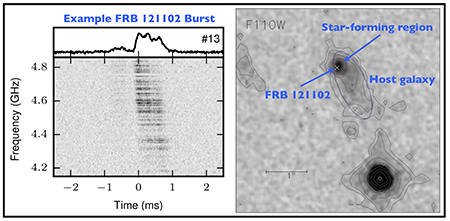URL: https://physikseminar.desy.de/zeuthen/past_colloquia/colloquia_in_2018/january_31_2018/@@siteview
Breadcrumb Navigation
New twists in the story of fast radio bursts
Jason Hessels | ASTRON Netherlands Institut of Radio Astronomy
and University of Amsterdam
Seminar room 3, 15:00
Fast radio bursts (FRBs) are millisecond-duration radio flashes, apparently originating at cosmological distances. As such, FRBs promise to provide a new view of extreme astrophysics in action - with, e.g., potential insights into the deaths of massive stars, particle acceleration, and the properties of the intergalactic medium. While some FRBs may be associated with cataclysmic astrophysical explosions, there is also one known repeating FRB, named FRB 121102, whose origin requires a more long-lived progenitor. FRB 121102 has been localized to an intense star-forming region in a dwarf galaxy at redshift z = 0.19. It is also associated with a persistent radio source and inhabits an environment of extreme magnetic field. The short durations of the bursts themselves argue that a neutron star is the likely source, but understanding how such a source can be visible at about 3 billion light years distance remains a puzzle. Perhaps FRB 121102 has a very different origin, and even its relation to the rest of the FRB population is still unclear. Here I will present an overview of the FRB phenomenon, focusing on the observational facts to date, and my own work on FRB 121102. I will also briefly present our ongoing efforts to discover pulsars and other fast radio transients using the LOFAR radio telescope.




